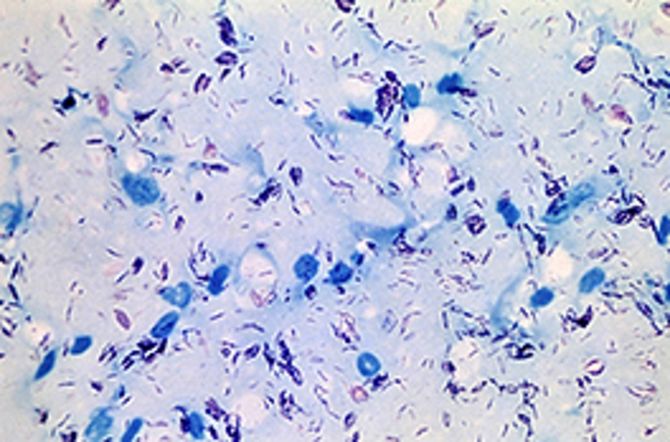Similar to tuberculosis many people who get into contact with the leprosy bacterium do not fall ill from the disease. It is an endogenous immunity which prevents many people getting even infected when being in contact with a person with leprosy. In other people the body's innate immune system takes care of fighting off the bacteria in a timely manner and so prevents the disease from breaking out.
It has been known for a long time that a single dose of Rifampicine (one of the drugs used for the chemotherapy against leprosy and tuberculosis) can prevent the outbreak of the disease for a period of two years in 60 percent of the cases.
In combination with the old TB vaccine BCG, the percentage even rises to up to 80 percent of all cases. But Rifampicine is a drug with many side effects and therefore should only be used in the case of well-founded suspicion – it is less useful for a prophylaxis at large.
Scientists are now interested in the following question: which are the risk factors leading to a later outbreak of the disease in people who had contact with a leprosy patient?
With leprosy the long incubation period makes it more difficult (mostly four to six years between the infection and the outbreak of the disease). No recognised method is known to detect the infection before the outbreak of the disease.
However, it is known that one must have prolonged and close contact to an infected person, therefore the medical staff can restrict their surveys to people in the familiar surroundings of the patient.
Since the beginning of 2008, a total of 21,711 people, who came from the surrounding area of 1,037 newly diagnosed leprosy patients, have been examined. In the evaluation of the numerous data the scientists hope to find certain risk factors to determine precisely the group of people who should receive prophylactic protection. Thus, the number of new infections of leprosy could be reduced further. However, an eradication of the disease is not possible by this method, either – for this purpose a protective effect of more than 80 percent would be needed.
If everything develops as planned, the results of this study will be available in 2011. If clear risk factors could be recognised early and prophylactic measures could be taken, huge progress would be achieved in preventing leprosy and the nerve damages that accompany the disease.
| Country: | Bangladesh |
| Financial volume: | 209,742 Euros |
| DAHW contribution: | 40,000 Euros |
| Research Partners: | Erasmus University Medical Centre Rotterdam, Netherlands |
| In charge: | Dr. J.H. Richardus |
| Results expected: | foreseen for 2011 |



